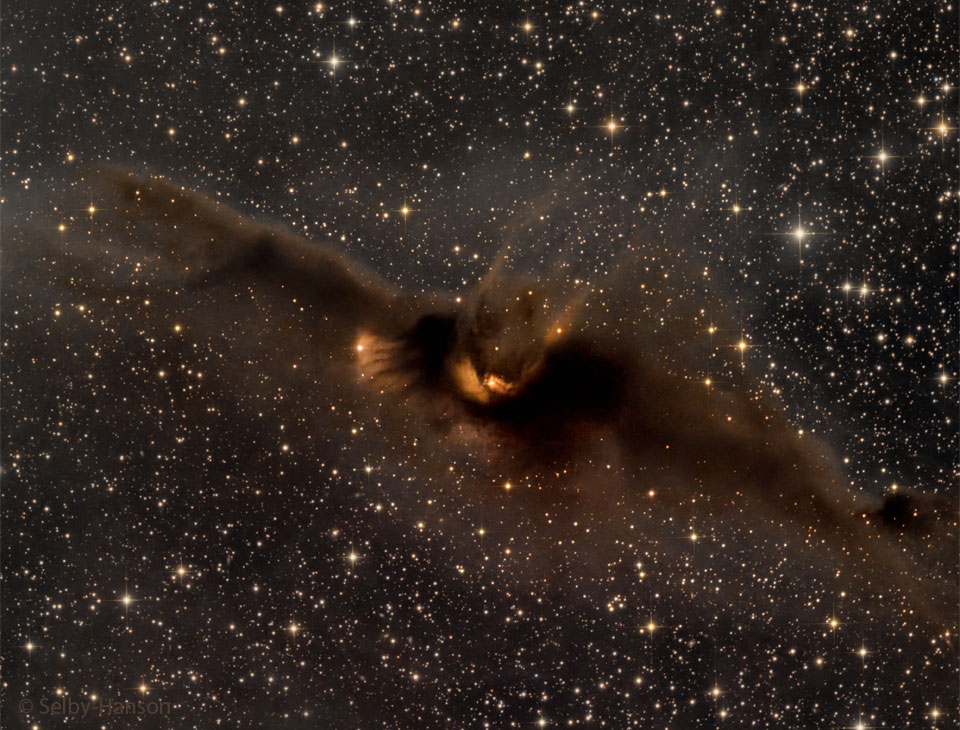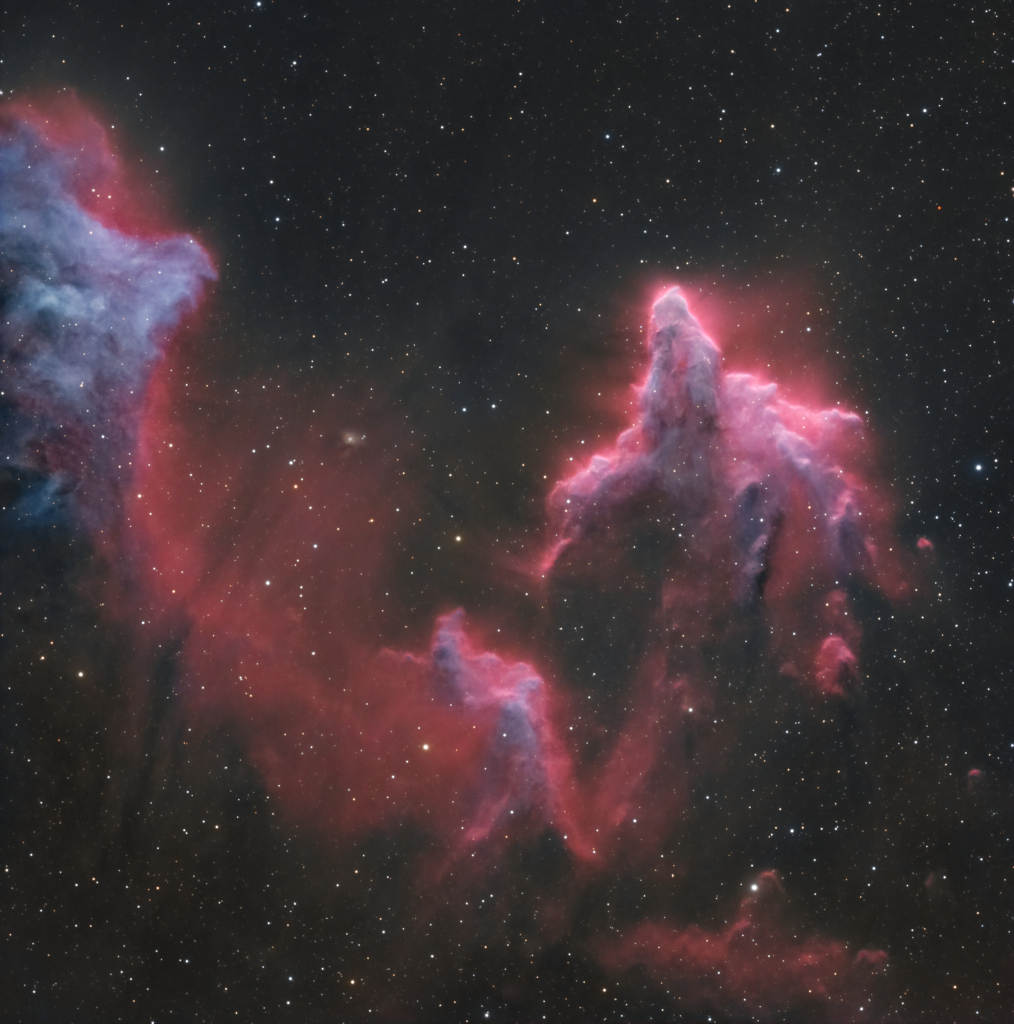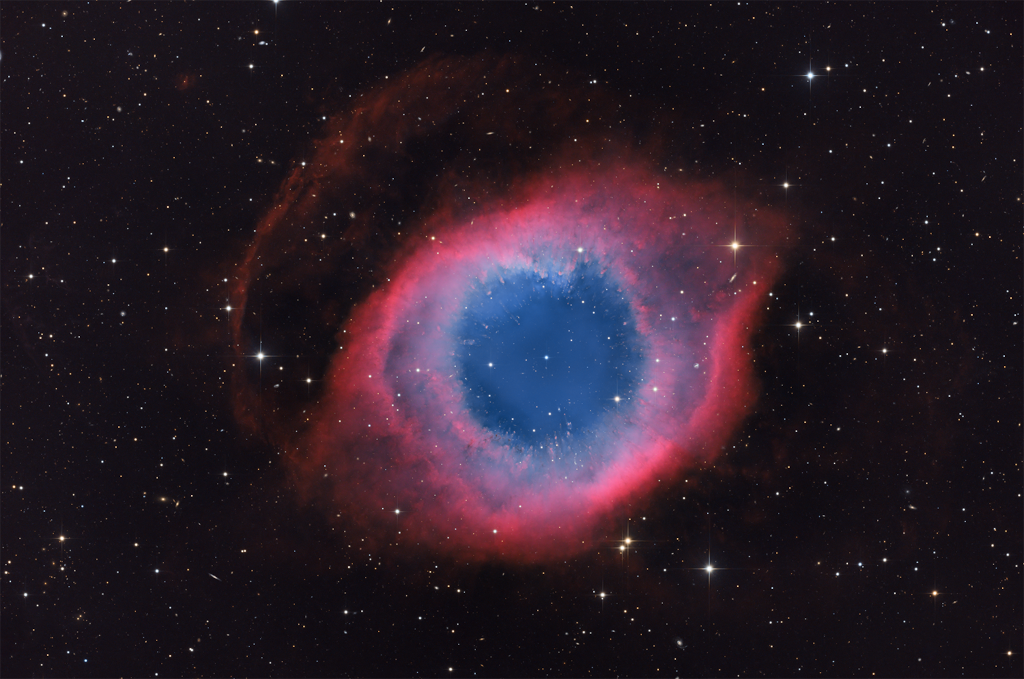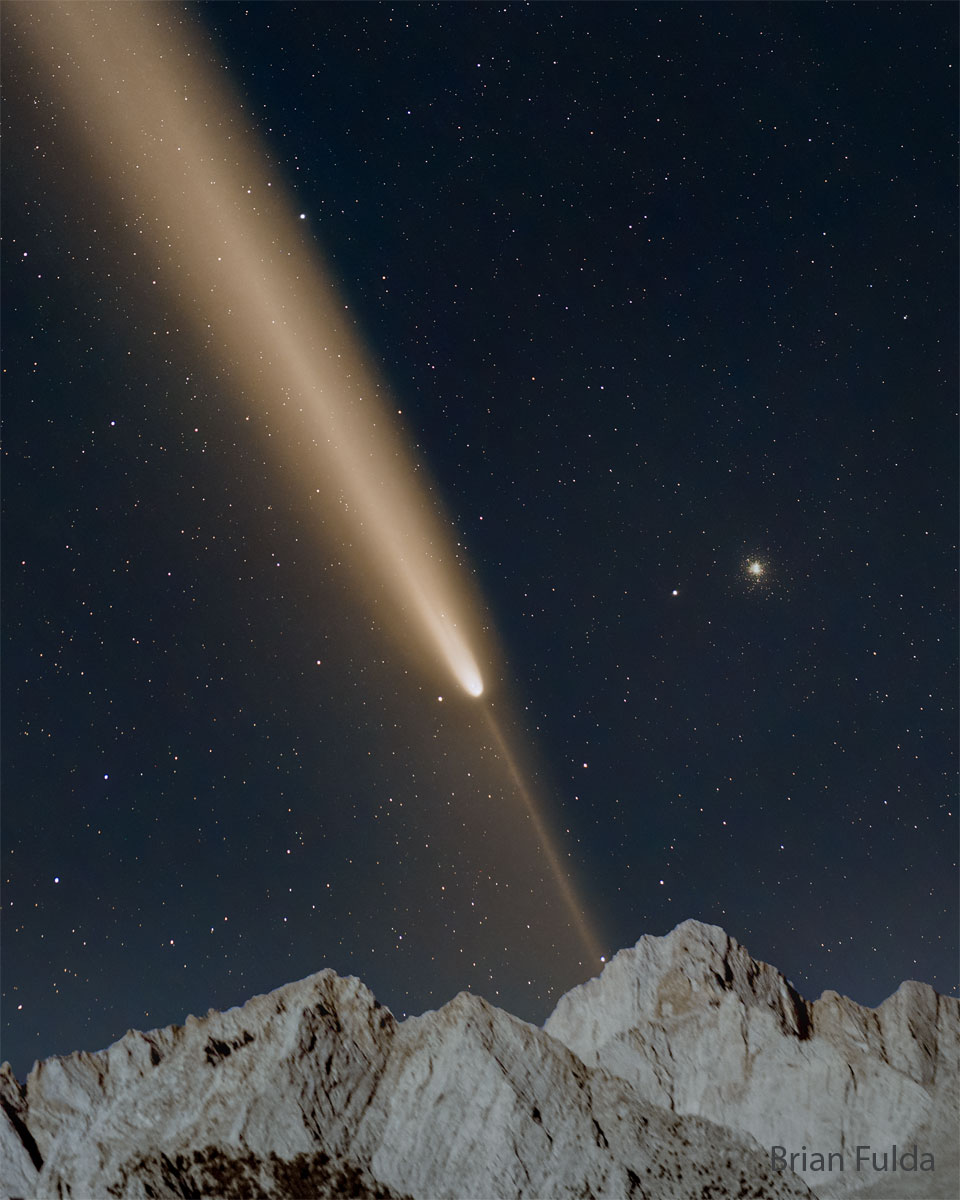Nombre total de pages vues
28/10/2024
27/10/2024
ASTRONOMY - LDN 43: The Cosmic Bat Nebula
2024 October 27
Credit & Copyright: Mark Hanson and Mike Selby; Text: Michelle Thaller (NASA's GSFC)
Explanation: What is the most spook-tacular nebula in the galaxy? One contender is LDN 43, which bears an astonishing resemblance to a vast cosmic bat flying amongst the stars on a dark Halloween night. Located about 1400 light years away in the constellation Ophiuchus, this molecular cloud is dense enough to block light not only from background stars, but from wisps of gas lit up by the nearby reflection nebula LBN 7. Far from being a harbinger of death, this 12-light year-long filament of gas and dust is actually a stellar nursery. Glowing with eerie light, the bat is lit up from inside by dense gaseous knots that have just formed young stars.
26/10/2024
VILLES BIONIQUES DU FUTUR - Dragonfly : un projet bionique pour New York
ASTRONOMY - Phantoms in Cassiopeia
2024 October 26
Image Credit & Copyright: Christophe Vergnes, Hervé Laur
Explanation: These brightly outlined flowing shapes look ghostly on a cosmic scale. A telescopic view toward the constellation Cassiopeia, the colorful skyscape features the swept-back, comet-shaped clouds IC 59 (left) and IC 63. About 600 light-years distant, the clouds aren't actually ghosts. They are slowly disappearing though, under the influence of energetic radiation from hot, luminous star gamma Cas. Gamma Cas is physically located only 3 to 4 light-years from the nebulae and lies just above the right edge of the frame. Slightly closer to gamma Cas, IC 63 is dominated by red H-alpha light emitted as hydrogen atoms ionized by the hot star's ultraviolet radiation recombine with electrons. Farther from the star, IC 59 shows less H-alpha emission but more of the characteristic blue tint of dust reflected star light. The field of view spans over 1 degree or 10 light-years at the estimated distance of the interstellar apparitions.
24/10/2024
ASTRONOMY - NGC 7293: The Helix Nebula
2024 October 24
Image Credit & Copyright: Patrick Winkler
Explanation: A mere seven hundred light years from Earth toward the constellation Aquarius, a star is dying. The once sun-like star's last few thousand years have produced the Helix Nebula. Also known as NGC 7293, the cosmic Helix is a well studied and nearby example of a Planetary Nebula, typical of this final phase of stellar evolution. Combining narrow band data from emission lines of hydrogen atoms in red and oxygen atoms in blue-green hues, this deep image shows tantalizing details of the Helix, including its bright inner region about 3 light-years across. The white dot at the Helix's center is this Planetary Nebula's hot, dying central star. A simple looking nebula at first glance, the Helix is now understood to have a surprisingly complex geometry.
23/10/2024
ASTRONOMY - Caught
2024 October 23
Credit & Copyright: SpaceX
Explanation: What if a rocket could return to its launch tower -- and be caught? This happened for the first time 10 days ago, after a SpaceX Starship rocket blasted off from its pad in Boca Chica, Texas, USA. Starship then split, as planned, with its upper stage landing in the Pacific Ocean. The big difference was the lower stage, Super Heavy Booster 12, was caught by its launch tower about 7 minutes later. Catching a rocket for reuse is a new and innovative way to help reduce the cost of rocket flight by making rockets more easily reusable. Starship rockets may be used by NASA in the future to send spacecraft to Earth orbit, the Moon, and even other planets.
22/10/2024
ASTRONOMY -M16: Pillars of Star Creation
Image Credit: NASA, ESA, CSA, STScI; Processing: Diego Pisano
Explanation: These dark pillars may look destructive, but they are creating stars. This pillar-capturing picture of the Eagle Nebula combines visible light exposures taken with the Hubble Space Telescope with infrared images taken with the James Webb Space Telescope to highlight evaporating gaseous globules (EGGs) emerging from pillars of molecular hydrogen gas and dust. The giant pillars are light years in length and are so dense that interior gas contracts gravitationally to form stars. At each pillar's end, the intense radiation of bright young stars causes low density material to boil away, leaving stellar nurseries of dense EGGs exposed. The Eagle Nebula, associated with the open star cluster M16, lies about 7000 light years away.
21/10/2024
ASTRONOMY - Comet Tsuchinshan-ATLAS over California
2024 October 21
Credit & Copyright: Brian Fulda
MUSIC - Antonio Vivaldi : Concert pour deux trompettes en do majeur
20/10/2024
LES NUAGES DIEUX DU CIEL - Un cirrus en forme de squelette de poisson (cirrus fibratus vertebratus)
ASTRONOMY - Up from the Earth: Gigantic Jet Lightning
2025 September 9 Up from the Earth: Gigantic Jet Lightning Image Credit: NASA , Expedition 73 , Nicole Ayers Explanation: What's tha...

-
2022 September 26 All the Water on Planet Earth Illustration Credit: Jack Cook, Adam Nieman, Woods Hole Oceanographic Institution ; Data ...
-
2021 August 11 Mammatus Clouds over Saskatchewan Image Credit & Copyright: Michael F Johnston Explanation: When do cloud bottoms appe...







